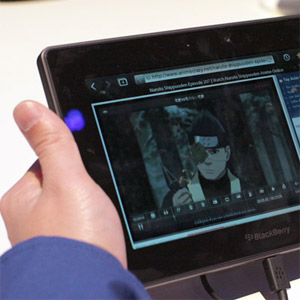 NEWS
NEWS
 NEWS
NEWS
 NEWS
NEWS
![]() Mobile devices and the BYOD movement are elements of a significant wave of proliferation of a whole new infrastructure paradigm. Virtual offices and remote employment scenarios continue to take hold in the enterprise. The ubiquitous availability of mobile applications on smartphones, televisions, game consoles, tablets and all sorts of consumer products has created an expectation of what amounts to a rising challenge for many organizations. This is one look at the consumerization of IT.
Mobile devices and the BYOD movement are elements of a significant wave of proliferation of a whole new infrastructure paradigm. Virtual offices and remote employment scenarios continue to take hold in the enterprise. The ubiquitous availability of mobile applications on smartphones, televisions, game consoles, tablets and all sorts of consumer products has created an expectation of what amounts to a rising challenge for many organizations. This is one look at the consumerization of IT.
Way Back and Fast Forward
At first, it started happening as employees started bringing their own technology products in. Using it to conveniently check email, or social network, they initially created security concerns to say the least. Execs would bring in their high-end consumer tablets, such as the iPad, and expect not only support, but complete functionality from the support branch of organizations. With the consumerization in full swing and no end in sight, expectations have emerged of a rich user experience across a number of devices is a practical expectation. This sets the stage for one of the most significant IT revolution events in recent memory. Enterprises are slowly but surely having to change gears and adapt, embrace, and control the mobile device movement.
New Considerations
The face of this movement is far beyond mobile device management and considerations for adapting such technology are numerous. Beyond plain functionality are such elements of challenges as mentioned like the user experience, logon, security, data at rest, API integration, reliability, performance, support, and standardization. Many companies are looking and have embarked on creating their own apps. Simply ‘webifying’ existing apps does not satisfy the breadth of IT concerns, namely security and functionality. A focused approach on developing applications therefore must emerge in order to ensure the best success. Other organizations rely on presentation technologies, such as Virtual Desktop Infrastructure (VDI), or Thin or Streaming Apps and other related constructs. Infrastructure also comes into focus across these solutions as hardware, networking, and business-grade architecture all are requirements for creating the best reliable, secure, stable experience.
Security is an over-riding concern in all of these cases as mobile devices are easily lost or misplaced. Data that is at rest can be compromised, encryption should be enabled if possible in all possible scenarios, techniques that can detect and defy malware or recording applications and preventing man-in-the-middle attacks are but a few of a number of significant security concerns that come into play. In terms of support, departments all around are deciding where to draw the line – do they support Android tablets, what versions they support, exactly what to support on each.
New Efficiencies
Despite all these concerns there is little doubt that the proliferation of these devices and the BYOD movement is changing the game in enterprise environments. The simple truth of the matter is that despite all the concerns and challenges, the changes are helpful in creating new efficiencies in the workspace, and I must mention the significant cost savings for enterprises that embrace these changes. VMware is one prominent organization that has embraced the BYOD movement. IBM is another example of a mass enterprise that recently started moving towards this type of enterprise construct. In terms of the user experience, the goal posts have moved beyond the trusted enterprise deployed device to the security of data at the application level that requires a deep analysis of how a solution is working and what is happening to the data at any given time – to ensure the best experience, reliability and secure product possible.
The transformation of IT in the enterprise, consumerization of IT, and the BYOD movement are at this time extremely significant elements in shaping other technology trends, such as big data and cloud adoption. For the enterprise, supporting and embracing this movement will unlock and fully enable the workforce and boost productivity, the likes of which has probably not been seen since PCs first started becoming common.
THANK YOU